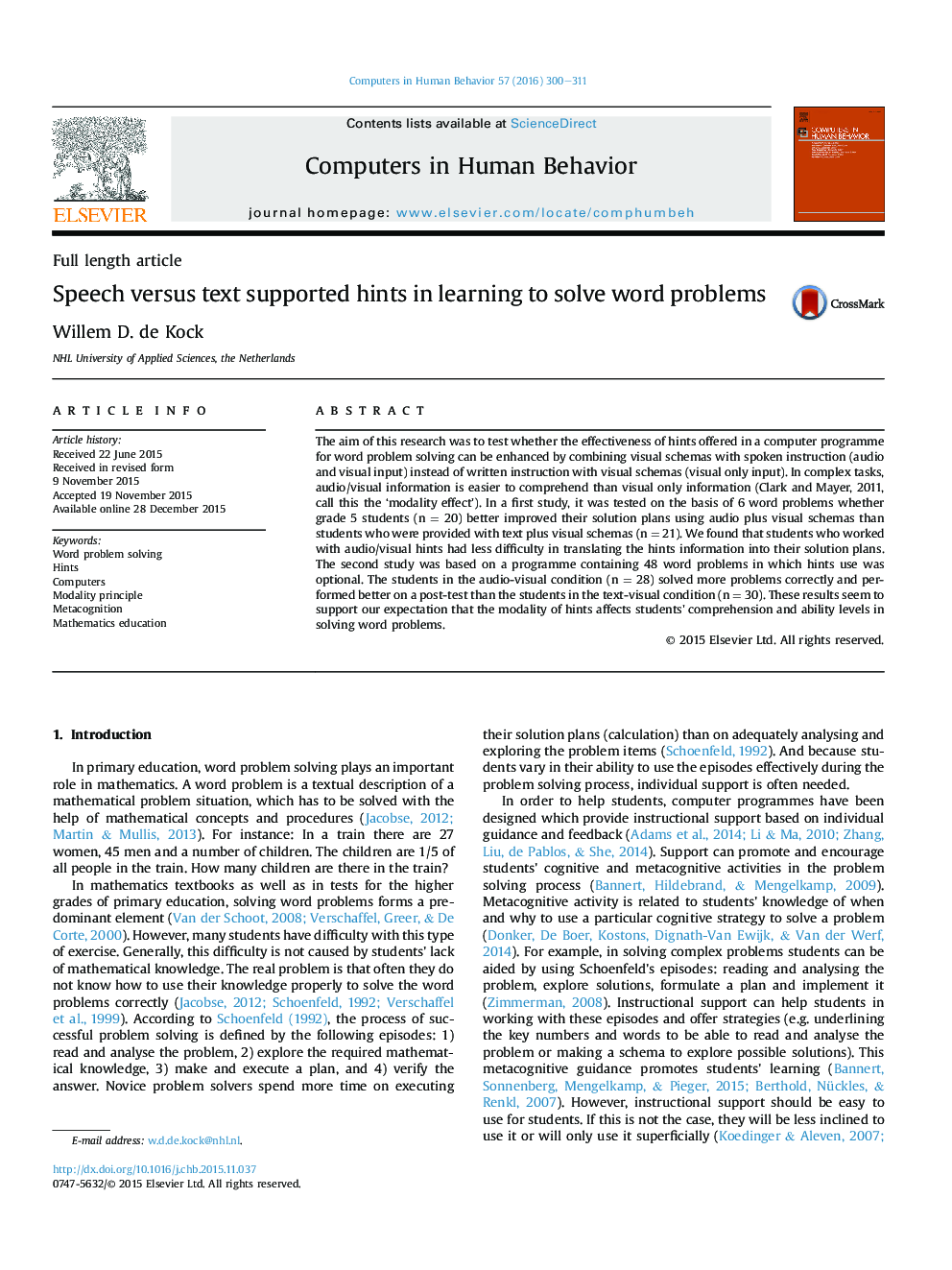| Article ID | Journal | Published Year | Pages | File Type |
|---|---|---|---|---|
| 350239 | Computers in Human Behavior | 2016 | 12 Pages |
•We examined modality of hints in learning to solve word problems by grade 5 students.•Students' solution plan improved more after consulting audio-and-visual schema hints.•Audio-and-visual schema hints also improved problem solving in a transfer test more.
The aim of this research was to test whether the effectiveness of hints offered in a computer programme for word problem solving can be enhanced by combining visual schemas with spoken instruction (audio and visual input) instead of written instruction with visual schemas (visual only input). In complex tasks, audio/visual information is easier to comprehend than visual only information (Clark and Mayer, 2011, call this the ‘modality effect'). In a first study, it was tested on the basis of 6 word problems whether grade 5 students (n = 20) better improved their solution plans using audio plus visual schemas than students who were provided with text plus visual schemas (n = 21). We found that students who worked with audio/visual hints had less difficulty in translating the hints information into their solution plans. The second study was based on a programme containing 48 word problems in which hints use was optional. The students in the audio-visual condition (n = 28) solved more problems correctly and performed better on a post-test than the students in the text-visual condition (n = 30). These results seem to support our expectation that the modality of hints affects students' comprehension and ability levels in solving word problems.
